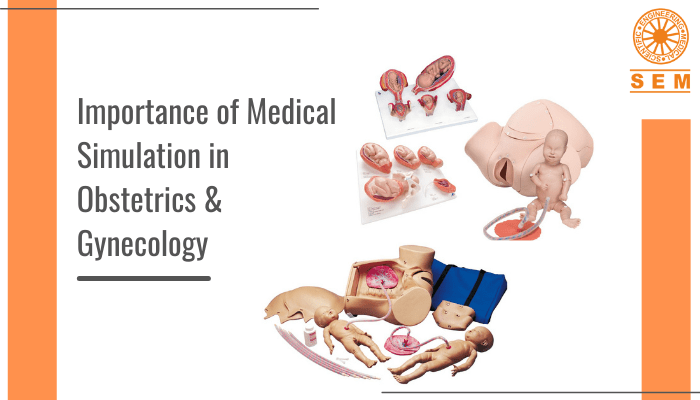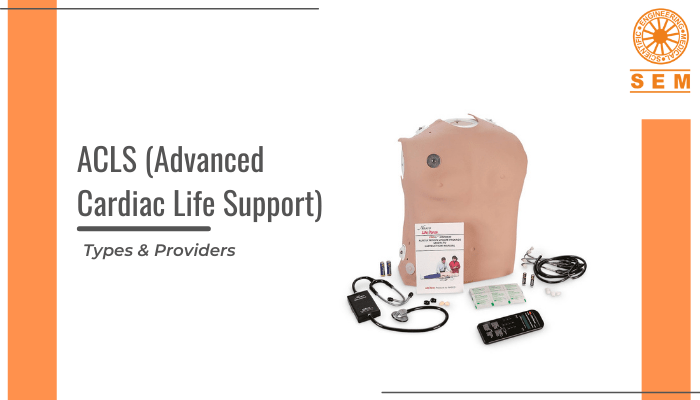Importance of Medical Simulation in Obstetrics & Gynecology
The individual healthcare professionals and teams are called for the development and maintenance of skills that are necessary for effective and safe clinical care, and this is termed as ‘Medical Simulation’. In this, the trainee surgeons become more efficient and gain confidence by practising and treating their patients remotely. David Kolb (1982) developed the Experiential Learning Theory (ELT) that explains how simulation is another name for deep learning.
The simulation-based training should be fully funded and integrated within training programmes at all stages for the clinician so that the operative gynecology fully takes the advantage of the benefits that the explosion of endoscopic surgery has offered in recent years. It is important for all healthcare organisations to value and adequately resource the simulation-based training, high-quality simulation training to be delivered by developing a skilled faculty of expert clinical facilitators and the necessity of human factors training to safe care to be widely communicated.
Learn about Birthing Simulator RealMom 2.0
Introduction to Simulation in Obstetrics and Gynecology
About 46% of all maternal deaths and 40% of neonatal deaths happen during labour or the first 24 hours after birth.
Permaturity (35%), neonatal infections (33%), birth asphyxia (20%), and congenital malformations (9%) are one of the main causes of newborn deaths.
To increase skills and knowledge acquisition in obstetric and gynecologic clinical scenarios, simulation is used as a valuable teaching tool. The obstetric and gynecologic simulation also plays a very important role in both competency-based as well as outcome-based medical education. The ability of simulators to reproduce clinical situations has been brought into use in obstetric and gynecologic education, whereas they were created in the 1920s for flight training for pilots, initially.
Read more: Birthing Simulator with Articulating Birthing Fetus
The simulations that are used in medical training were used first in the 1960s with standardized mannequins and patients. With the development of simulation software for medical education, simulation has also continued to evolve in the 1980s.
It is an effective way for students and residents to develop their abilities in a safe learning environment. A realistic approach is offered by simulation for practising such skills that do not cause harm to a living patient. Although, due to the decreased volume, the residents may not encounter specific cases but the reduction in duty hours has shown to enhance the quality of standardized examination scores for them and simulation allows them and students to experience skills and cases scenarios that might come into use in a reproducible environment.
Simulated learning interactions with patients is provided by standardized patients and is very advantageous in obstetrics and gynecology to practice and model procedures in simulated scenarios. Clinical simulation encounters offer learning skills for instrument deliveries, standard delivery, shoulder dystocia, postpartum haemorrhage, massive blood transfusion protocol, fetal malpresentation, amniotic fluid emboli or disseminated intravascular coagulation. Robotic operative and Laparoscopic simulations facilitate operative skills for salpingectomy, oophorectomy, hysterectomy, and access to the abdomen.
Role of Medical Simulation in Obstetrics & Gynecology
Curriculum Development
The transition away from the classic master-apprentice model is allowed by simulation. They are executed with various gynecologic and obstetric procedures such as management of postpartum haemorrhage, pediatric-adolescent gynecology exams, interdisciplinary obstetric emergencies, cesarean sections and laparoscopic hysterectomy.
Other examples of procedure-specific simulation in gynecology include – operative hysteroscopy, laparoscopic tubal ligation, loop electrosurgical excision procedure, vaginoscopy, cystoscopy, and vaginal repairs, salpingectomy, total abdominal hysterectomy, vaginal hysterectomy, Burch colposuspension, laparoscopic sacrocolpopexy, laparoscopic hysterectomy.
Did you check: Basic Lucy – Emotionally Engaging Birthing Simulation
Procedural Skills Assessment
Though simulation in the field of obstetrics and gynecology is widely available across the world, there still exists a disparity in the benefit learned and retention during simulations. That is why there is a need to develop a standardized way of assessing knowledge of students and residents after each simulation experience.
Increasing the Outcomes of the Healthcare Team
The simulation training in obstetrics and gynecology has helped in enhancing knowledge acquisition and it has also introduced residents and students to increased levels of care coordination and interpersonal communication that somehow resulted in the increase in the overall performance of the team. There have been increased patient-centred care and safety and improved outcomes through the use of simulation.
Conclusion
Simulation is essential for improving the skill level of obstetricians and gynecologists. The training in simulation offers the opportunity for participants to acquire team-based skills and procedural knowledge in a safe environment.


